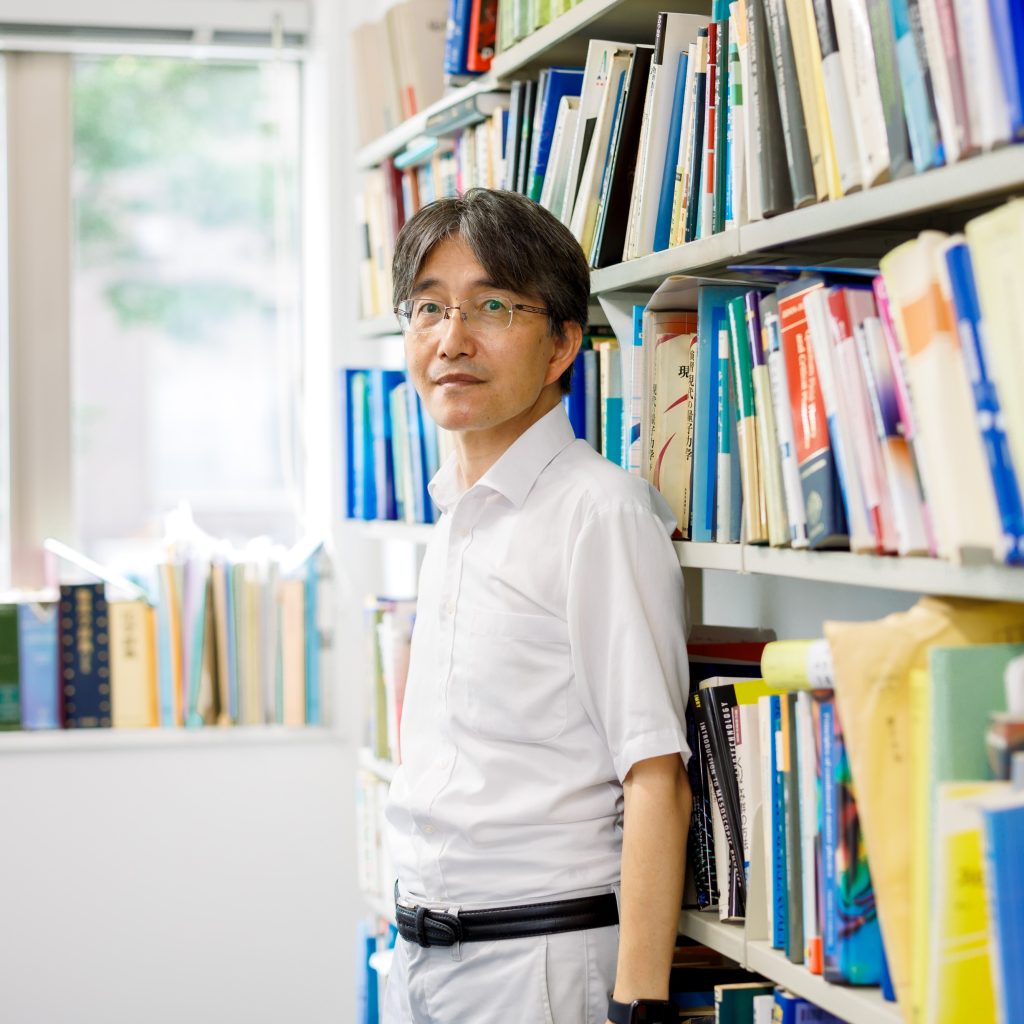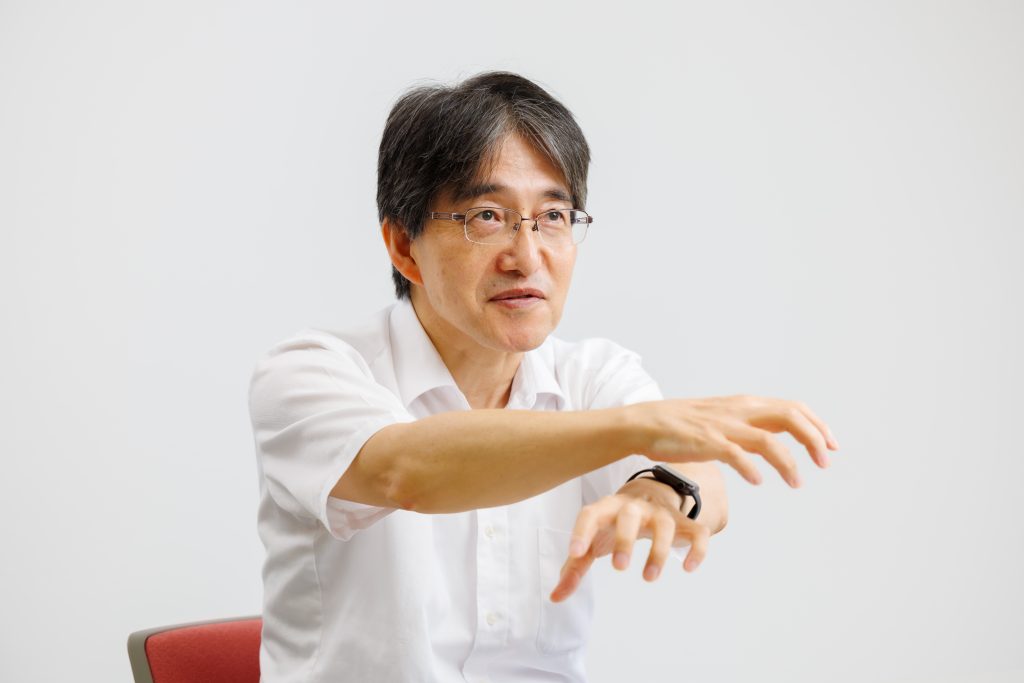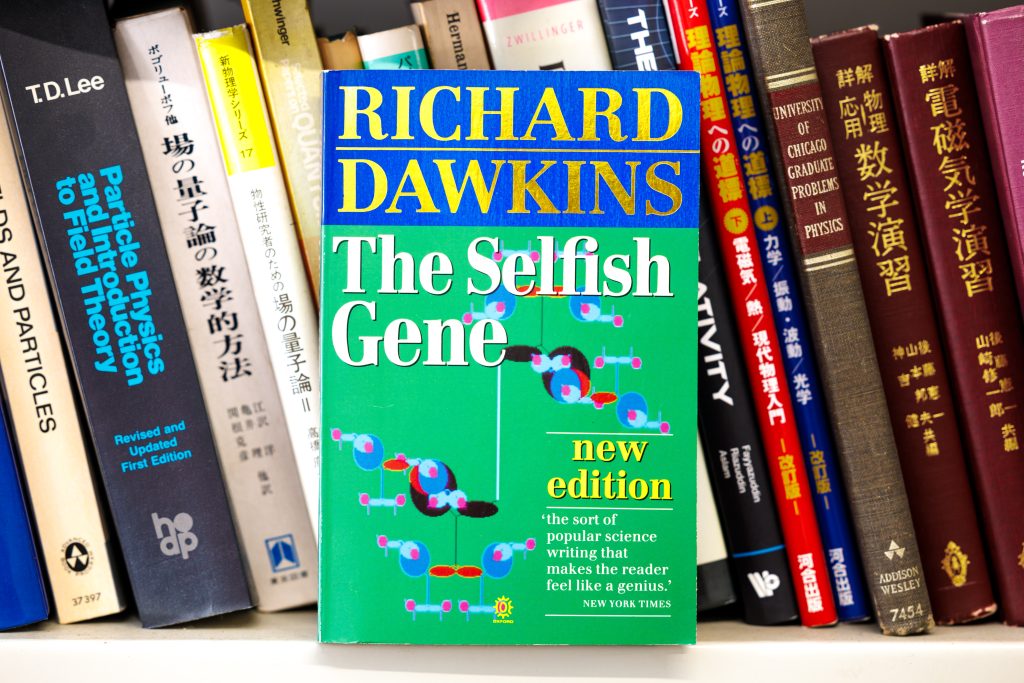
Professor Tomi Ohtsuki at the Faculty of Science and Technology studies the behavior of disordered electrons in semiconductors. He explains the significance of researching elementary particles like electrons, and provides insight into new research methods using AI that has been the core of his work in recent years.
If you keep on dividing a material over and over, you will eventually get down to the atoms that make up that particular material. These atoms are comprised of a nucleus, which carries a positive electric charge, and electrons that have a negative charge. Electrons usually spin around the nucleus along orbitals, but may also leave atoms and move about freely—these are known as free electrons and are the basis of electricity.
We developed our understanding of the principles of electricity following advances made in the field of physics from the 1870s and on. In the century since, countless electronic products have been produced, ranging from radios and televisions to refrigerators, washing machines, digital cameras, computers, and more. Even now, the development of electronic devices that harness the properties of electricity continues, including quantum computers with almost unimaginable computational power.
The potential of using electrons as quantum computers

My work focuses on researching the properties of electricity, mainly by examining the behavior of electrons in solids such as semiconductors. Semiconductors are found in devices like smartphones and computers in the form of integrated circuits (IC), and exhibit properties which fall in between those of conductors that allow the flow of electric current, and those of insulators in which electricity does not flow.
Whereas materials with a high level of purity have atoms neatly arranged in an orderly fashion, to make semiconductors, we add impurities to insulators, and this can cause the lattice disordered or create holes in the lattice. The focus of my research is on how electrons behave when the lattice is in a disordered state like this.
We use computer simulations to identify the behavior of electrons, which exhibit wave-like properties. Analyzing their behavior by entering the positions of semiconductor atoms and applying various factors to alter their conditions generates a wave function in the image of a waveform, which describes the state of electron waves. We then analyze the generated waveform data with a computer system capable of even more complex calculations, and use quantum mechanics on the resulting data to determine why such behavior is taking place.
One of the main reasons I spend so much time on research in the microscopic realm is due to my own pure curiosity in wanting to accurately understand what is happening before my eyes. There is also a part of me that one day hopes to see one of my research findings playing a useful role for technology in one form or another. For instance, there might be a way to apply our understanding of semiconductor electron behavior to the very fundamentals of quantum computers.
Expressions of surprise motivates my research
During my research, I may come across a pattern of regularity in the behavior of disordered atoms or electrons perhaps once every five years—moments like this give me so much joy. I have always enjoyed surprising those around me, and I tend to end up conducting research in fields that others usually refrain from. When my research findings include results that are a complete surprise, watching the reaction of my fellow researches gives me a sense of motivation to pursue even more topics.
An example of one of my successful projects is from around six years ago, where we developed technology for imaging wave functions using AI. I actually came up with this idea after seeing AI being used to recognize the faces of dogs and cats—which is somewhat of a departure from my usual research into electrons. I am currently working with a group of physicists on research into harnessing the potential of AI in fields other than wave functions, and if things go well our findings should be able to boost the rate of physics research in Japan. I will continue focusing on my researching efforts with a sense of excitement in knowing that I will be able to surprise more and more people.
The book I recommend
“The Selfish Gene”
by Richard Dawkins, Oxford Univ Pr; New Edition

This book by the famous animal behaviorist redefined the concept of biological evolution from a genetics viewpoint, outlining how the purpose of altruistic behavior seen in worker bees with no reproductive capabilities was actually ideal for making a copy of their genes. This book demonstrated to me the importance of thinking outside of the box for research efforts.
-
Tomi Ohtsuki
- Professor
Department of Engineering and Applied Sciences
Faculty of Science and Technology
- Professor
-
Graduated from the Department of Physics, Faculty of Science, University of Tokyo and received his M.S. and Ph. D. in Science at the university’s Graduate School of Science. Held positions such as Postdoctoral Fellow at the Japan Society for the Promotion of Science, Postdoctoral Fellow at the National Metrology Institute of Germany, and Research Associate at Osaka University, before becoming Associate Professor at Sophia University in 1995 and his current position from 2001.
- Department of Engineering and Applied Sciences
Interviewed: September 2022